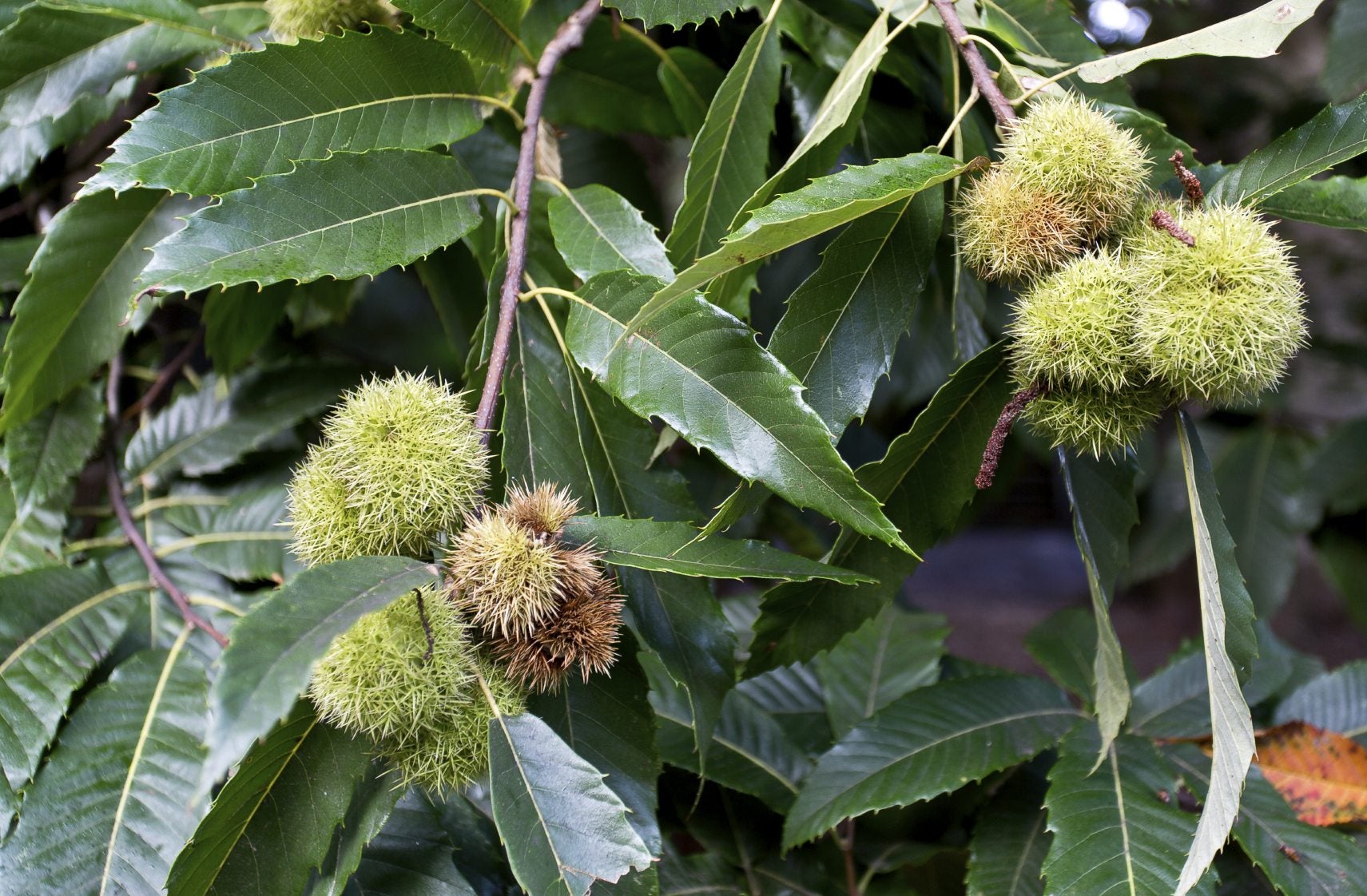Chestnut Tree Care: Guide To Growing Chestnut Trees


Chestnut trees have been cultivated for their starchy nuts for thousands of years, at least since 2,000 BC. The nuts have been an important source of food for humans in the past, used to make flour as well as a substitute for potatoes. Currently, nine different chestnut tree types grow in temperate areas around the world. All are deciduous trees belonging to the family Fagaceae, like oaks and beeches. If you are thinking of growing chestnut trees, read on for information about chestnut tree care.
Chestnut Tree Information
Before you start growing chestnut trees, read up on chestnut tree information. That will help you determine whether your backyard will be a good site for one of these trees. Additionally, it is important to note that these are not the same trees as horse chestnuts (Aesculus) - of which the nuts are not edible. The size of chestnut trees depends on the species, but, generally, chestnuts are big trees. The tallest species is the American chestnut that scrapes the sky at 100 feet (30+ m.). Be sure you check the mature height and spread of the tree you are considering before you plant. In addition to American chestnut (Castanea spp), you will find both Asian and European varieties. Chestnut trees are attractive, with reddish-brown or grey bark, smooth when the trees are young, but furrowed with age. The leaves are a fresh green, darker on the top than the bottom. They are oval or lance-shaped and edged by widely separated teeth. The flowers of the chestnut tree are long, drooping catkins that appear on the trees in spring. Each tree bears both male and female flowers, but they cannot self-pollinate. The potent fragrance of the flowers attracts insect pollinators.
How to Grow Chestnut Trees
If you are wondering how to grow chestnut trees, the most important consideration is soil. All chestnut tree types require well-drained soil to thrive. They can grow in partially clay soil if the land is on a slope, but they will grow best in deep, sandy soils. Be sure your soil is acidic before growing chestnut trees. If you aren’t sure, get the pH tested. You need a pH of between 4.5 and 6.5.
Chestnut Tree Care
If you read up on chestnut tree information, you’ll find that growing chestnut trees is not difficult if they are planted in an appropriate site. When planted on good, deep soil, the trees are very drought tolerant when established. Young seedlings require regular irrigation. If you are growing chestnut trees for the nut production, however, you’ll need to provide more chestnut tree care. The only way you can be sure of getting abundant, large-sized nuts is if you water the trees regularly throughout the growing season. Most chestnut tree types only begin to produce nuts after they are three to 7 years old. Still, keep in mind that some chestnut tree types can live up to 800 years.
Sign up for the Gardening Know How newsletter today and receive a free copy of our e-book "How to Grow Delicious Tomatoes".

Teo Spengler is a master gardener and a docent at the San Francisco Botanical Garden, where she hosts public tours. She has studied horticulture and written about nature, trees, plants, and gardening for more than two decades, following a career as an attorney and legal writer. Her extended family includes some 30 houseplants and hundreds of outdoor plants, including 250 trees, which are her main passion. Spengler currently splits her life between San Francisco and the French Basque Country, though she was raised in Alaska, giving her experience of gardening in a range of climates.